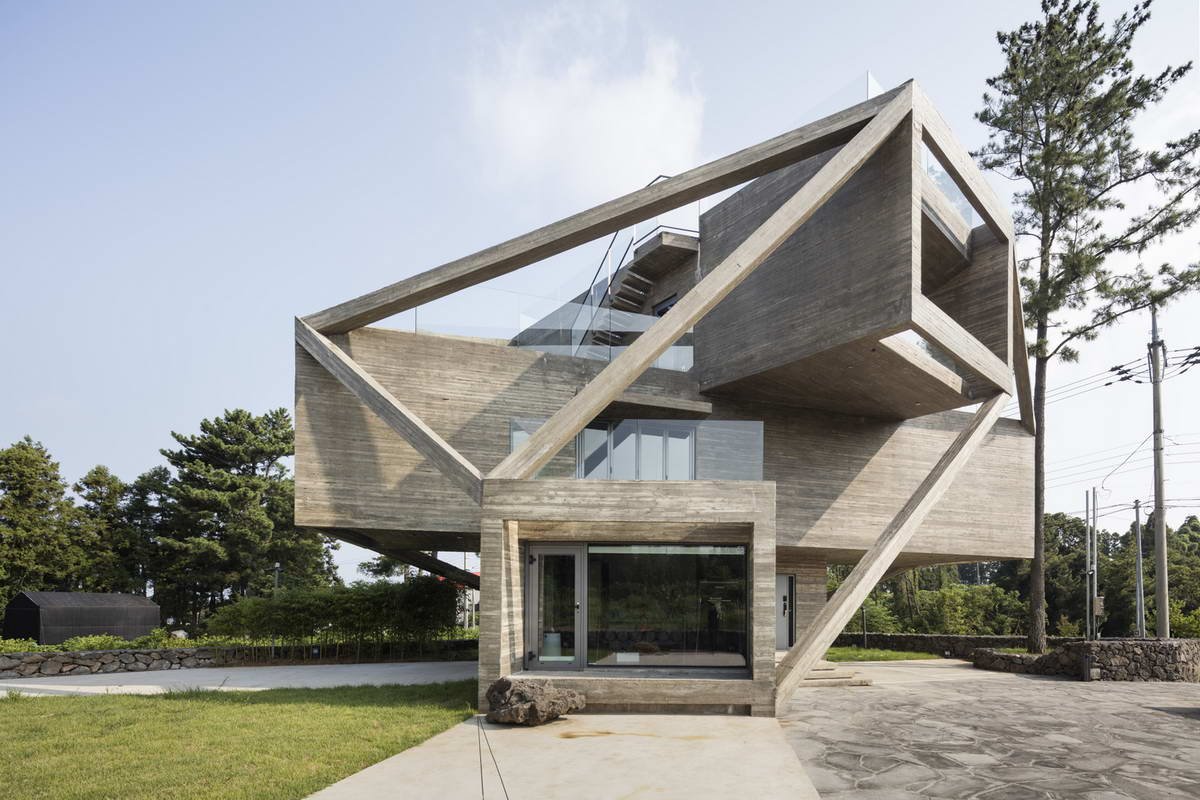#11422. Deconstructivist Facade: Dynamic Concrete Geometry
This building exemplifies contemporary deconstructivist architecture, completely reimagining the traditional house form. The facade showcases an impressive composition of shifted and overlapping concrete volumes that create a dynamic, almost sculptural structure.
The facade's distinctive feature is its expressive geometric elements made of monolithic concrete with pronounced wooden formwork texture. The inclined supports and cantilevered projections are not merely decorative elements but serve a structural function, supporting the protruding parts of the building. Large windows and glass elements create a contrast with the massiveness of concrete and provide abundant natural lighting to the interior space.
The architect has masterfully worked with proportions and balance – despite the apparent chaos, the building looks equilibrated and cohesive. The minimalist color palette of the facade allows one to focus on the interplay of forms, shadows, and light.
For private housing, elements that could be adopted from this project include the use of concrete texture as a decorative feature, bold experimentation with facade geometry, and the skillful combination of massive and transparent elements. Even without employing complex deconstructivist forms, accentuated corner elements and material contrast can add individuality to a more traditional house.
